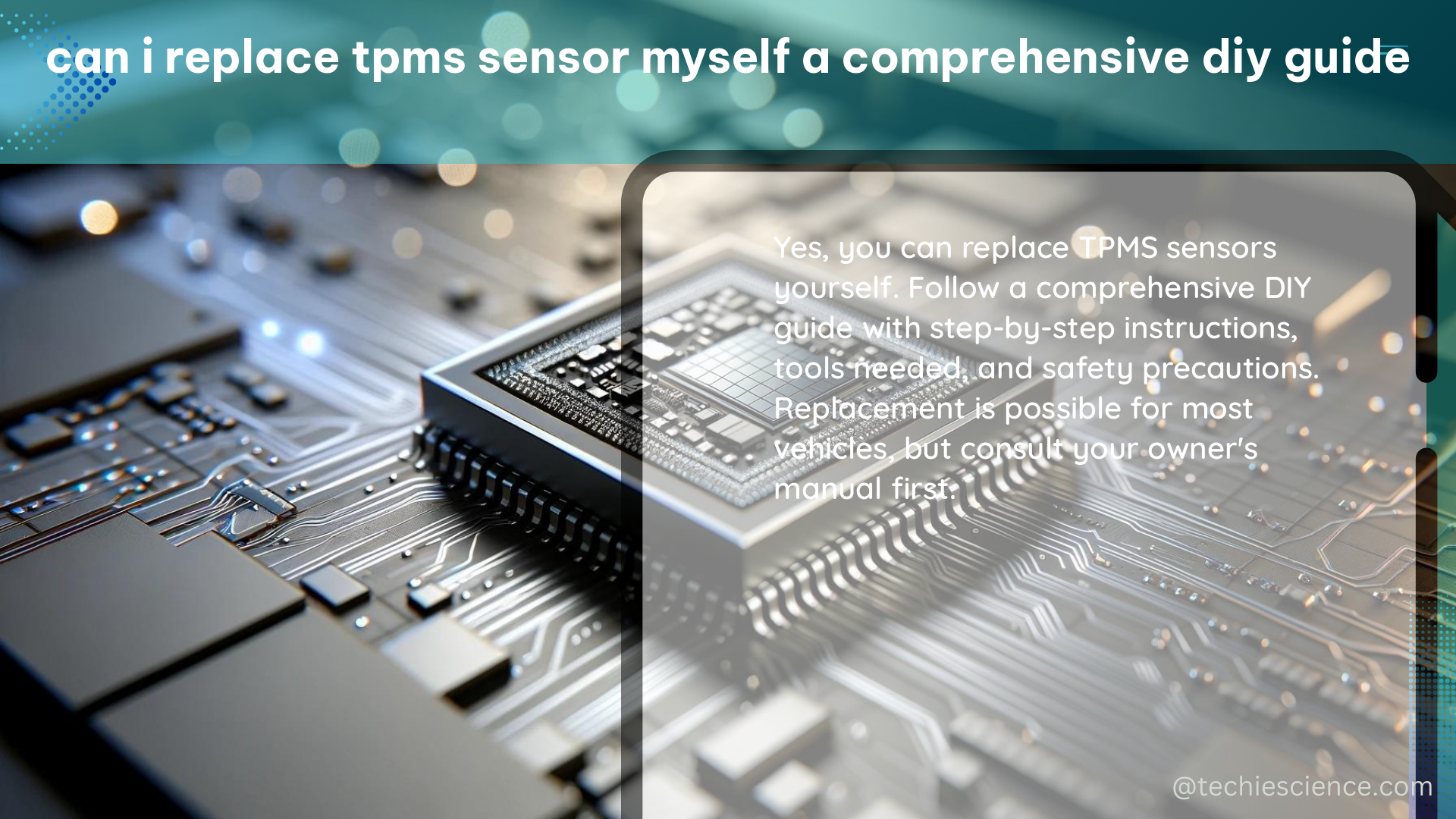Replacing a Tire Pressure Monitoring System (TPMS) sensor can be a cost-effective and straightforward task for individuals with some mechanical knowledge and the right tools. This comprehensive DIY guide will walk you through the process of replacing a TPMS sensor, including the necessary tools, the step-by-step procedure, and important considerations to ensure a successful replacement.
Tools Required for TPMS Sensor Replacement
To replace a TPMS sensor, you will need the following tools:
- TPMS Tool: This specialized tool is used to activate the TPMS sensor and program it into the vehicle’s system.
- Tire Bead Tool: This tool is used to break the tire bead and create clearance for removing the old sensor and installing the new one.
- Puller Tool: This tool screws onto the valve and is used to pull the new sensor into the valve hole.
Step-by-Step Guide to Replacing a TPMS Sensor

-
Wheel Removal: Start by safely jacking up the vehicle and removing the wheel with the faulty TPMS sensor.
-
Tire Bead Loosening: Use the tire bead tool to break the tire bead, creating enough clearance to access the TPMS sensor.
-
Old Sensor Removal: Locate the TPMS sensor, which is typically mounted on the wheel rim or the valve stem. Use the puller tool to carefully remove the old sensor.
-
New Sensor Installation: Ensure that the new TPMS sensor is compatible with your vehicle’s system. Carefully insert the new sensor into the valve hole and use the puller tool to secure it in place.
-
TPMS Sensor Programming: Place the TPMS tool against the tire sidewall, either 180 degrees from the tire valve stem for banded sensors or directly below the valve stem on the sidewall for valve stem-mounted sensors. The tool will provide feedback in the form of a flashing green light and a beep sound for each successful response from the tire pressure sensor. Activate the sensor at least two times to ensure proper programming.
-
Tire Bead Sealing: Use the tire bead tool to reseal the tire bead, ensuring a tight fit between the tire and the wheel rim.
-
Wheel Reinstallation: Reinstall the wheel and lower the vehicle back to the ground.
-
TPMS System Verification: Start the vehicle and check the TPMS warning light to ensure that the new sensor is properly integrated into the system. If the light remains on, you may need to perform additional troubleshooting or seek professional assistance.
Compatibility and Cost Considerations
When replacing TPMS sensors, it is crucial to ensure that the new sensors are compatible with your vehicle’s system. There are three main options for replacement TPMS sensors:
- Genuine Lexus/Toyota Sensors: These sensors are available from Lexus/Toyota dealers and are the most expensive option, typically costing around $71.47 per sensor.
- Denso OEM Sensors: These sensors are made by Pacific and are known to be compatible with many vehicle systems, including the Lexus/Toyota TPMS. They are more affordable than genuine sensors, costing around $31.79 each.
- No-Name Replacement Sensors: These sensors can be found on eBay, Amazon, or other online marketplaces, with prices ranging from $7 to $15 per sensor. However, it is important to note that these sensors may not be compatible with your vehicle’s TPMS and may require additional programming tools or methods.
Conclusion
Replacing a TPMS sensor can be a cost-effective and straightforward task for individuals with some mechanical knowledge and the right tools. By following the step-by-step guide provided in this comprehensive DIY manual, you can save money and ensure that your vehicle’s TPMS is functioning correctly. Remember to always use compatible sensors and follow the proper programming procedures to ensure a successful TPMS sensor replacement.
References:
– TPMS Sensor Replacement Video
– DIY: How to Copy/Clone TPMS
– Replace TPMS Sensors Yourself
– DIY: Replacing TPMS Sensors on 2007-2009 LS460/LS600
– TPMS Sensor Replacement Tutorial

The lambdageeks.com Core SME Team is a group of experienced subject matter experts from diverse scientific and technical fields including Physics, Chemistry, Technology,Electronics & Electrical Engineering, Automotive, Mechanical Engineering. Our team collaborates to create high-quality, well-researched articles on a wide range of science and technology topics for the lambdageeks.com website.
All Our Senior SME are having more than 7 Years of experience in the respective fields . They are either Working Industry Professionals or assocaited With different Universities. Refer Our Authors Page to get to know About our Core SMEs.